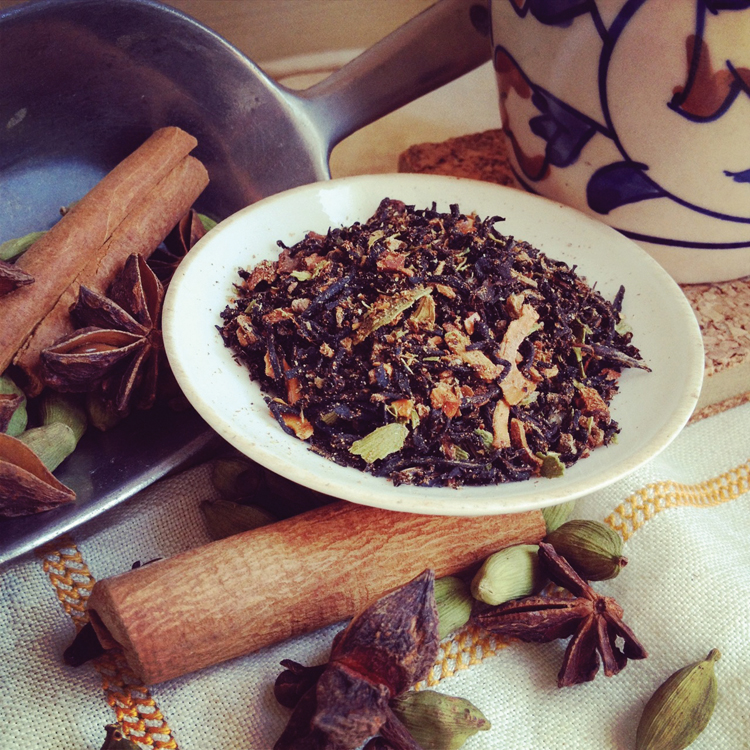Tea Party
by Rebecca Goldschmidt
For many of us, this is a time of year for healing, growth and the reintroduction of ritual to everyday life. Luckily, all of these needs can be accomplished by heating up a kettle of water. At the Random Tea Room, we believe that there are an abundance of herbs and teas that can improve day-to-day existence.
First, know the difference between true tea and herbal infusions. All tea comes from the same plant, camellia sinesis. The various ways it’s processed lead to the vast array available, which is also influenced by where the tea was grown, the altitude, rainfall, season it was plucked, and even drying and fermenting processes. In contrast, medicinal herbs come from many genera and species of flora that make each unique. When water is added to herbs, it’s referred to as an infusion.
Be mindful of the water needs of your tea or infusion of choice. Black and red teas tolerate being steeped with water just shy of boiling; overly hot water loses oxygen, which makes a flat tasting brew. Green and white teas are best with spring water at cooler temperatures (around 170 F) to prevent scorching and bitterness.
Most herbal infusions benefit from high temperatures and long steep times, especially hardy roots. Herbs, unlike teas, which can become bitter when steeped too long, have less tannic content, and therefore can steep for extended periods or multiple times. At the Random Tea Room, we leave the herbs in the cup and serve with a filtered straw called a bombilla, traditionally used in drinking yerba mate.
Here are some of our favorite teas and infusions if you’ve gone a little overboard.
Overdrinking
Rejuvenator Infusion: This blend of yerba mate, peppermint, lapacho, licorice, kudzu and fresh ginger is designed to put a spring back in your step. The mate has a compound similar to caffeine, and lapacho may reduce inflammation. An important ingredient in this blend is kudzu root, in which daidzein and daidzin are the main compounds that may curb alcohol cravings, according to some studies.
Teatotaler’s Toddy: A combination of tulsi, kudzu, licorice, marshmallow, slippery elm and honey make an excellent alcohol-free hot toddy.
Overeating
Belly Blend Infusion: A soothing blend of peppermint, wild yam, chamomile, fennel, licorice and ginger for upset stomachs. If you suffer from acid reflux, order a custom blend without peppermint, which may relax the esophageal muscles and worsen the situation.
Pu-erh: During the fermentation process used to make pu-erh tea, it develops living enzymes that can help aid digestion. This is one of the oldest forms of tea.
Overthinking
Simmer Down Infusion: A blend of chamomile, lemon balm, motherwort, peppermint, lavender and passionflower designed to assist the body in alleviating stress and worn nerves.
Kava Kava: This is a ceremonial drink in the South Pacific. Its main compounds, known as kavalactones, have in some studies been shown to improve feelings and emotions, but consult your doctor if you have a liver condition. The kavalactones break down when your water is hotter than 160 F, so be mindful when brewing.
Rebecca Goldschmidt is the proprietress of the Random Tea Room, a tea shop and art and music space in Philadelphia.











